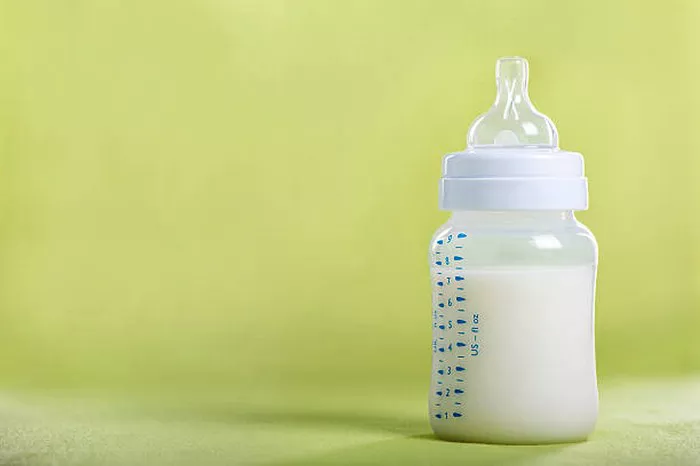Combining breast milk and formula can offer flexibility and convenience for breastfeeding mothers. However, questions often arise about the safety and shelf life of such mixtures. Understanding the guidelines for mixing and storing formula with breast milk is crucial for ensuring the health and well-being of infants. In this article, we delve into the factors that determine the longevity of formula mixed with breast milk and provide comprehensive guidance for safe preparation and storage.
Balancing Breastfeeding and Formula Feeding
Breastfeeding provides numerous benefits for both infants and mothers, including optimal nutrition, immune support, and bonding. However, not all mothers are able to exclusively breastfeed due to various reasons such as medical conditions, work commitments, or personal preferences. In such cases, supplementing breastfeeding with formula can be a practical solution to ensure adequate nourishment for the baby.
Mixing breast milk and formula allows mothers to provide the nutritional benefits of breast milk while incorporating the convenience and flexibility of formula feeding. This hybrid feeding approach can be particularly beneficial for working mothers, those with low milk supply, or infants who require supplementation to meet their nutritional needs. However, it’s essential to understand the guidelines for safely mixing and storing formula with breast milk to prevent contamination and ensure optimal freshness.
Factors Affecting the Shelf Life of Mixed Breast Milk and Formula
The shelf life of mixed breast milk and formula depends on several factors, including temperature, storage conditions, and bacterial contamination. Understanding these factors is crucial for maintaining the quality and safety of the mixed feedings. Let’s explore each of these factors in detail:
1. Temperature:
Temperature plays a significant role in determining the longevity of mixed breast milk and formula. Both breast milk and prepared formula are susceptible to bacterial growth when exposed to temperatures that promote microbial proliferation. Ideally, mixed feedings should be consumed promptly or refrigerated to inhibit bacterial growth.
2. Storage Conditions:
Proper storage conditions are essential for preserving the nutritional integrity of mixed breast milk and formula. After mixing, the feeding should be stored in a clean, airtight container to prevent contamination. Additionally, storing the mixture in the refrigerator can prolong its shelf life compared to leaving it at room temperature.
3. Bacterial Contamination:
Bacterial contamination poses a significant risk to the safety of mixed breast milk and formula. Proper hygiene practices, such as washing hands before handling feeding equipment and sterilizing bottles and nipples, are essential for preventing bacterial contamination. Additionally, using freshly expressed breast milk and following strict preparation guidelines can minimize the risk of microbial growth in mixed feedings.
Guidelines for Mixing and Storing Formula with Breast Milk
To ensure the safety and freshness of mixed breast milk and formula, it’s important to adhere to the following guidelines:
1. Use Freshly Expressed Breast Milk:
When mixing breast milk with formula, it’s crucial to use freshly expressed breast milk to minimize the risk of bacterial contamination. Breast milk that has been stored in the refrigerator or freezer should be thawed and gently warmed before mixing with formula.
2. Follow Preparation Instructions:
Follow the manufacturer’s instructions when preparing formula to ensure the correct ratio of formula to water. Avoid diluting or concentrating the formula beyond the recommended guidelines, as this can affect the nutritional composition and safety of the feeding.
3. Mix Thoroughly:
Thoroughly mix the formula and breast milk to ensure uniform distribution of nutrients. Use a clean utensil, such as a spoon or whisk, to gently stir the mixture until fully combined.
4. Serve Immediately or Refrigerate Promptly:
Mixed breast milk and formula can be served immediately or refrigerated for later use. If serving immediately, ensure that the feeding is consumed within the recommended timeframe to prevent bacterial growth. If refrigerating, transfer the mixture to a clean, airtight container and label it with the date and time of preparation.
5. Discard Unused Portions:
Discard any unused portions of mixed breast milk and formula after feeding to prevent bacterial contamination. Avoid reheating or reusing leftover feedings, as this can compromise the safety and quality of the mixture.
Conclusion
Mixing breast milk with formula can provide a practical solution for breastfeeding mothers who need to supplement their baby’s nutrition. By understanding the factors that affect the shelf life of mixed feedings and following proper preparation and storage guidelines, mothers can ensure the safety and freshness of the feedings for their infants. With careful attention to hygiene and storage practices, mixed breast milk and formula can provide a convenient and nourishing feeding option for babies.


